Description
Parrotfish are a group of colorful, tropical fishes native to shallow seas. Feeding on coral and algae gives parrotfish a sweet, shellfish flavor. It is a delicacy in many parts of the world. In Polynesia its served raw(sashimi) and once considered “royal food” only eaten by the king.
If you come across responsibly sourced parrotfish in the market, I recommend giving it a try for dinner. The fillets are white, meaty, and easy to saute or braise. Just make sure that the species is not threatened and that it comes from cold, safe waters like the Sea of Cortez. Caroline’s Parrotfish from this area is a delicious choice for a Caribbean style dinner.
This fish is named for their bird-like beaks, which are used to feed on coral polyps and algae. They come in a wide variety of shapes, sizes, and colors.
Parrotfishes are elongated, usually rather blunt-headed and deep-bodied, and often very brightly coloured. They have large scales and a characteristic birdlike beak formed by the fused teeth of the jaws. The beak is used to scrape algae and the soft part of coral from coral reefs and is strong enough to leave noticeable scars in the coral.
A distinctive, colorful and abundant fish. Young adults and females with scales outlined in darker gray; often bright red below.
If you were wondering whether or not fish sleep, most do, and the parrotfish is one of them. When sleeping, the parrotfish will secrete a mucous shield that covers its body for protection.
The Parrotfish is also known in Brazil as Budião.
Biology and distribution
Western Atlantic: Southern Florida (USA), Bermuda, Bahamas, and throughout the Caribbean Sea to Brazil.
Super males green, with bright yellow spot at upper edge of gill cover, yellow bar at base of tail, curved orange-yellow mark on caudal fin rays.
Initial phase fish with a brown head, the scales of the upper two-thirds of the body with pale centers and dark brown edges, the lower third of body and fins bright red. Terminal phase males are green with three diagonal orange bands on upper half of head.
Parrotfish are variable in colour, the male of a species often differing considerably from the female, and the young may differ from the adult. Parrot fishes are protogynous hermaphrodites; that is, they first function as females and later transform into males.
The development of parrotfishes is complex and accompanied by a series of changes in sex and colour (polychromatism). Most species are sequential hermaphrodites, starting as females (known as the initial phase) and then changing to males (the terminal phase). In many species, for example the stoplight parrotfish (Sparisoma viride), a number of individuals develop directly to males (i.e., they do not start as females).
Parrotfish congregate in harems, a situation where one dominant male lives with many females as his mates. If something happens to the male, then a female will transform into a male to fill the vacancy.
Primary characteristics
- Dorsal spines (total): 9;
- Dorsal soft rays (total): 10;
- Anal spines: 3;
- Anal soft rays: 9.
- Maturity: Lm 16.3, range 18 – ? cm
- Max length : 25 inches TL male/unsexed;
- Common length : 38.0 cm TL male/unsexed;
- Max. published weight: 3.50 lbs.
Health benefits:
Parrotfish is a low-fat protein source. In addition, this fish also contains omega-3 fatty acids, vitamins, and minerals such as iron, zinc, iodine, magnesium, and potassium, as well as vitamins and minerals. You should eat fish twice a week to maintain your bones, heart, and brain.
Parrotfish contain Iodine, selenium, zinc, potassium, vitamins A and D are among the minerals in this fish. Your lungs will benefit from this.
Some parrotfish species, including the queen parrotfish (Scarus vetula), secrete a mucus cocoon, particularly at night.[11] Prior to going to sleep, some species extrude mucus from their mouths, forming a protective cocoon that envelops the fish, presumably hiding its scent from potential predators.[12][13] This mucus envelope may also act as an early warning system, allowing the parrotfish to flee when it detects predators such as moray eels disturbing the membrane.[13] The skin itself is covered in another mucous substance which may have antioxidant properties helpful in repairing bodily damage,[11][13] or repelling parasites, in addition to providing protection from UV light.
Therefore here are 15 Benefits of Parrot Fish for your Health:
- Launching the Body’s Metabolic Process: Did you know that a person’s metabolism must be smooth because this process greatly affects growth. Burning carbohydrates into energy will determine many things, especially weight. People with fast metabolism tend to have thin bodies. Parrot fish can accelerate this process to achieve ideal body weight.
- Curing Body Pain: Stiffness usually occurs because the body lacks vitamin B. Parrots Fish can cure aches because they contain this vitamin. Body aches are also easily lost if due to parrots fish oil content.
- Treat dizziness:Dizziness can also be cured by eating Parrots Fish, because these fish are efficacious to relax tense muscles and promote blood circulation.
- Increase the Number of Red Blood Cells: Red blood cells can soar thanks to foods that contain lots of iron such as fish. Parrots fish is really rich in iron.
- Prevent Thiamine deficiency (Beriberi) Disease: Beriberi has symptoms of swelling in the calf. This is because the body lacks vitamin B. Parrot Fish have benefits that can prevent beriberi disease because it can trigger skin elasticity, so that the fluid does not become swollen.
- Regulates the PH of the Body: The best body pH is the one that approaches PH perfect alkaline water. To achieve this, it is necessary to eat Parrots Fish. The ideal body pH will make your body fit and not get any disease, especially flu and fever.
- Relaxing Tension in the Nerve: Every inch of the human body has nerves, which if caught in a pinch can cause pain and dizziness. To relax tendon tension so that it is always elastic, just eat Parrots fish because these fish work to produce anti-stress hormones.
- Make IQ Increase: All fish contain Omega 3 which is very good for refreshing the brain. When the brain is fresh, getting enough oxygen, you will be smart. One indicator of increasing IQ is indeed nutrition and the environment. Parrots fish can support this indicator, becoming an alternative food commodity.
- Anti Cancer
- Mood Stabilizers
- Speed up the wound healing process
- Tighten Facial Skin
- Prevent Bladder Disorders
- Triglyceride lowering
- Reducing Pain After Surgical Surgery
Culinary profile:
The parrotfish has a delicious flavor, and its meat is white and meaty. Unlike other shellfish, the parrotfish is easy to sauté and braise.
Well, because they have a unique combination of taste and texture. Parrotfish flesh is pure white in color, with no dark strip down the center under the skin. It’s flavor is mild, but sufficiently interesting to be enjoyed by the fish connoisseur – yet not so assertive as to offend those who want their fish “white and lite”.
The flesh stays firm enough for any mode of cooking, but on the plate, can be flaked apart into unusually thick firm textured flakes. The heads, bones, fins and skins make a very good, fairly mild stock, suitable for soups and stews.
Parrotish cannot be cooked skin-on.
Scales: This fish is completely covered with very large stiff scales that have a lot of tight overlap, making them difficult to scrape off, and they fly around a lot as you do. For a larger fish (more than 2 pounds) you will have to pull the scales off in clumps with long nose pliers.
Cleaning: This is not the easiest fish to clean as there are some tough membranes that aren’t easy to pull out, and the gills are hard to get to. Use your long nosed pliers.
Fillet: The fish is fairly easy to fillet with an easy to follow bone structure. When you get to the rib cage, it is easiest to cut the ribs from the backbone with kitchen shears and pull them from the fillet. Pulled lengthwise they slip out easily taking no flesh with them. There are some substantial sharp centerline pinbones for the full length of the rib cage. Pull these out straight forward.
Skin: The skin shrinks very severely when heated, it doesn’t let go, and it doesn’t soften until the damage is done. Trying to hold a fillet flat when it’s turned skin side down is futile, the skin just pulls the fillet into a lump. Fortunately, the skin is tough, enough to be easily removed cleanly using the long knife and cutting board Method. The skin does not have a strong or “off” flavor, but I do not use it in the stock pot because it will color the stock oddly.
Yield: A 1 pound 3oz (1.2 pound) fish yielded 8 ounces of skinless fillet (42% yeld).
Parrotfish videos
Parrotfish articles
Parrotfish nutrition facts
- Serving size: 3 ounces
- Calories: 83 kcal
- Protein: 19.9 grams
- Carbohydrate: 0 g
- Total fat: 0.4 grams
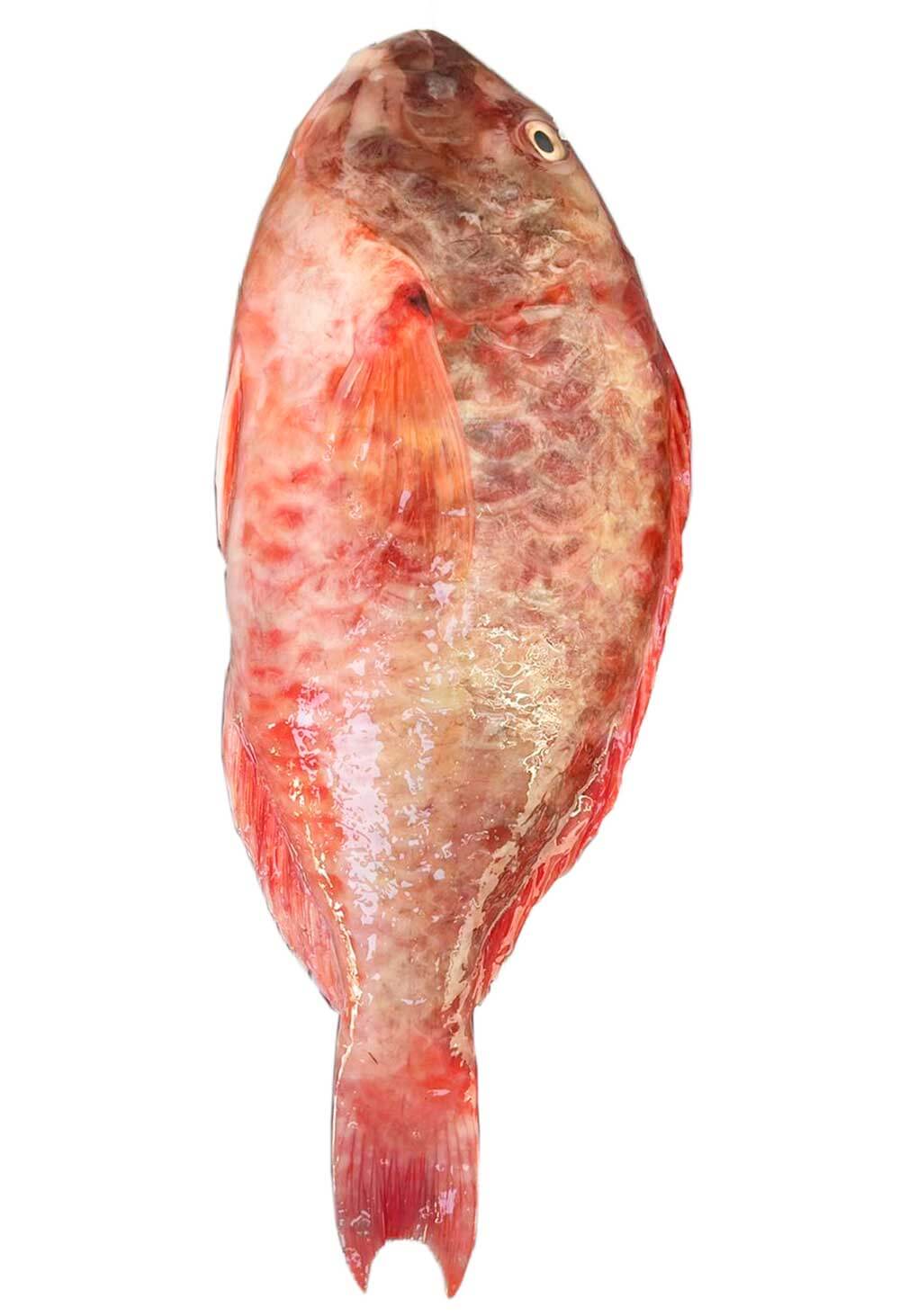
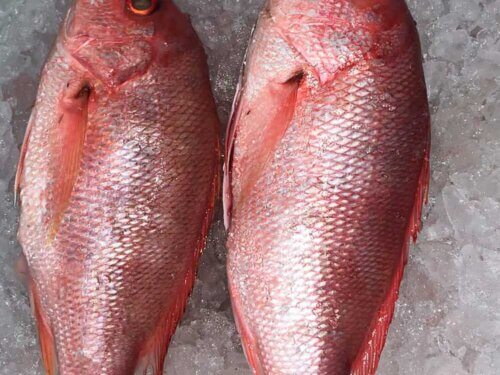
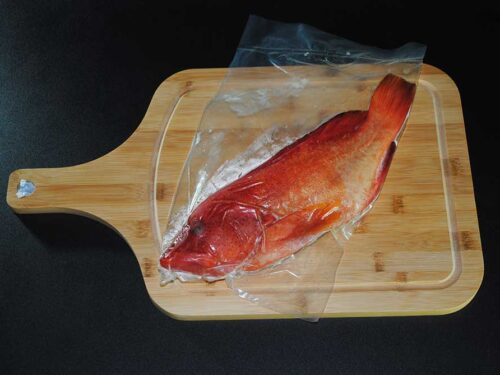
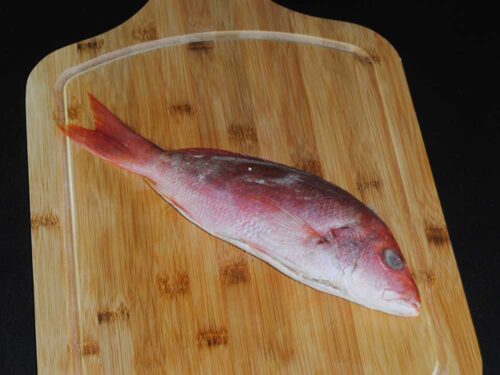
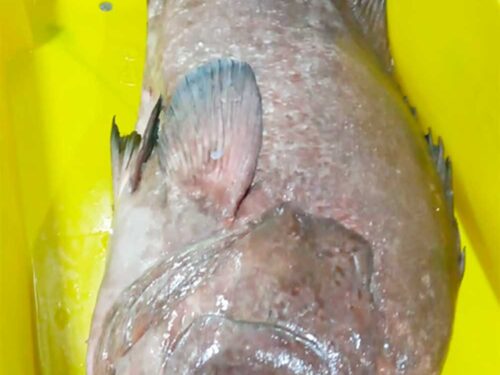
Reviews
There are no reviews yet.